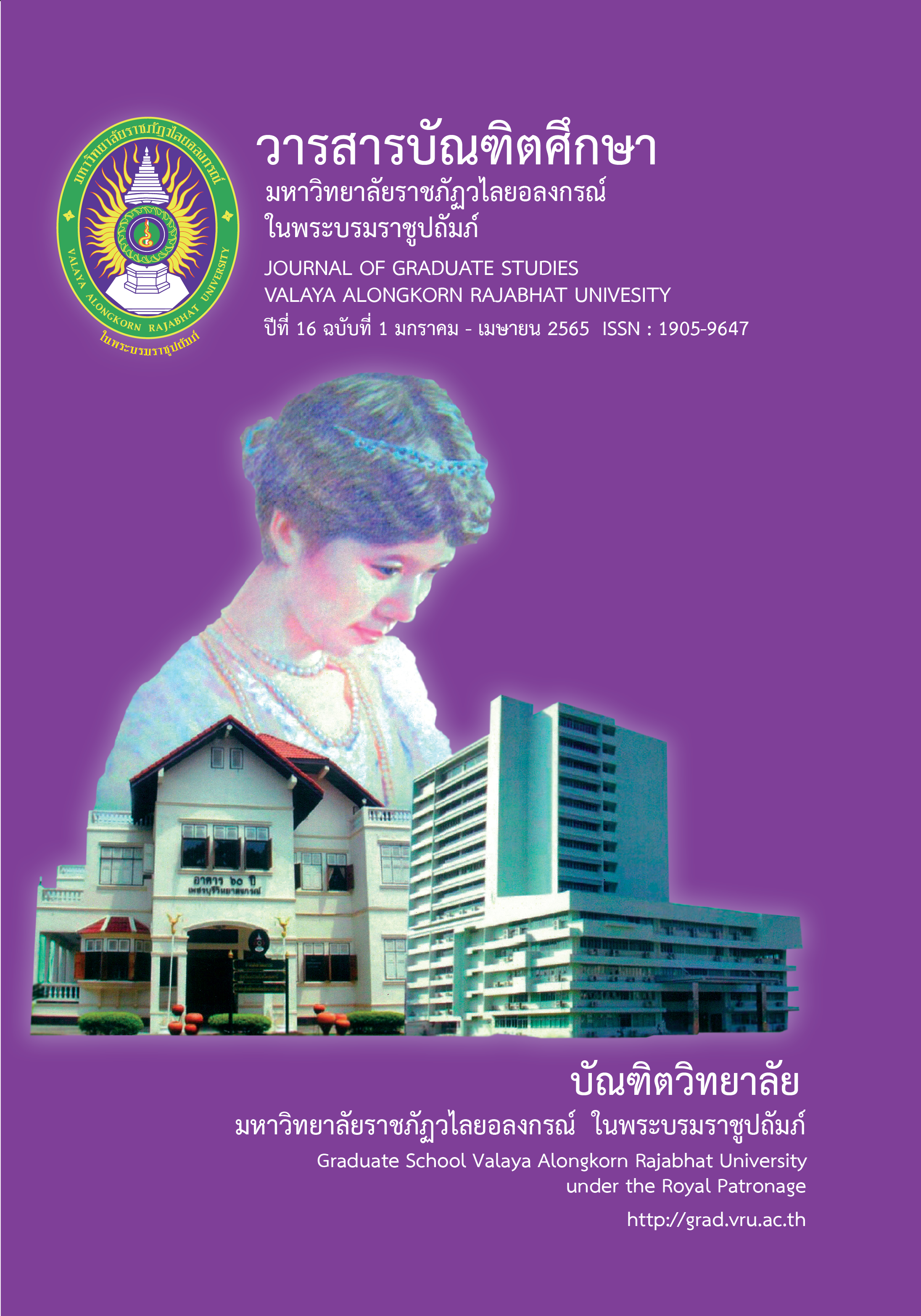THE ERROR ANALYSIS ON DIFFERENT TEXT GENRES OF THAI EFL STUDENTS
Main Article Content
Abstract
The aims of this research are to 1) analyze writing errors and 2) identify the sources of errors in three different genres: narration, description, and comparison/contrast. The samples were 80 third year English Liberal Arts students. The instrument used in this research was an error analysis form based on Surface Strategy Taxonomy. Statistics involved were frequency and percentage.
The results were as follows: 1) The most frequent error found in narration was the omission of past simple tense (40.29%). For description, the omission of pluralization (31.25%) was found with the most frequency. A type of errors found in comparison and contrast with the most frequency was the omission of singular verb (28.07%). 2) The sources of errors were interlingual interference of the mother tongue and intralingual interference consisting of overgeneralization, ignorance of rule restrictions, incomplete application, and false concept hypothesized. This research provides some pedagogical implications for EFL writing teachers as they will become aware that different highest-frequency errors are found in different text types. This leads to the preparation of appropriate supplementary grammar instruction and remedial exercises resulting in students’ writing improvement.
Article Details

This work is licensed under a Creative Commons Attribution-NonCommercial-NoDerivatives 4.0 International License.
บทความทุกเรื่องได้รับการตรวจความถูกต้องทางวิชาการโดยผู้ทรงคุณวุฒิ ทรรศนะและข้อคิดเห็นในบทความ Journal of Global of Perspectives in Humanities and Social Sciences (J-GPHSS) มิใช่เป็นทรรศนะและความคิดของผู้จัดทำจึงมิใช่ความรับผิดชอบของบัณฑิตวิทยาลัย มหาวิทยาลัยราชภัฏวไลยอลงกรณ์ ในพระบรมราชูปถัมภ์ กองบรรณาธิการไม่สงวนสิทธิ์การคัดลอก แต่ให้อ้างอิงแหล่งที่มา
References
Alahmadi, N. (2019). A Study of Grammatical Errors of Subject Verb Agreement in Writing Made by Saudi Learners. International Journal of English Language and Linguistics Research. 7(6), 48-59.
Bunphet, P. (2014). kānsưksā khō̜ phitphlāt thāng waiyākō̜n phāsā ʻAngkrit nai čhotmāi phư̄a ngān thurakit: kō̜ranī sưksā naksưksā sākhā wichā bō̜rihān thurakit rōngrīan ʻaksō̜n theknōlōyī Phatthaya [An Analysis of English Grammatical Errors Appearing in Business Letters: A Case Study of Business Management Students in Technology Aksornpattaya School]. Master of Education in English for Communication: Burapha University.
British Council. (2021). Narrative Tenses. Retrieved from https://www.teachingenglish.org.uk/article/narrative-tenses
Chuenchaichon, Y. (2015). A Review of EFL writing research studies in Thailand in the past 10 years. Journal of Humanities, Naresuan University, 11(1), 13-30.
Dipolog-Ubanan, G. F. (2016). L1 Influence on Writing in L2 among UCSI Chinese Students: A Case Study. Pertanika Journal of Social Sciences & Humanities. 24(4), 1841-1853.
Dulay, H. C., Burt, M. K., & Krashen, S. D. (1982). Language Two. Oxford: Oxford University Press.
Hendriwanto, and Bambang, S. (2013). An Analysis of the Grammatical Errors in the Narrative Writing of the First Grade Students of SMA 6 Yogyakarta. Journal of Education. 6(1), 57-71.
Heydari, P. & Bagheri, M. S. (2012). Error Analysis: Sources of L2 Learners’ Errors. Theory and Practice in Language Studies. 2(8), 1583-1589.
Malikamas, P. (2010). kān plǣ kap kānsō̜n phāsā ʻAngkrit [Translation and English Language Teaching]. 2nd Ed. Bangkok: Chulalongkorn University.
Moqimipour, K. & Shahrokhi, M. (2015). The Impact of Text Genre on Iranian Intermediate EFL Students’ Writing Errors: An Error Analysis Perspective. International Education Studies. 8(3), 122-137.
Nopmanotham, N. (2016). A Study of Writing Strategies Used by Thai EFL High School Students. Master of Arts in Teaching English as a Foreign Language: Language Institute Thammasat University.
Nordquist, R. (2021). Comparison in Composition. Retrieved from https://www.thoughtco.com/comparison-composition-and-rhetoric-1689882
Parichut, W. & Chinokul, S. (2014). English Language Writing Anxiety among Grade 11 Thai Students. OJED. 9(1), 506-520.
Phetdannuea, F. & Ngonkum, S. (2016). An Analysis of Interlingual Errors and Intralingual Errors in Thai EFL Students Writing at Khon Kaen University. KKU Res J HS (GS). 4(2), 35-51.
Phoocharoensil, S., et al. (2016). Grammatical and Lexical Errors in Low-Proficiency Thai Graduate Students’ Writing. Language Education Acquisition Research Network (LEARN) Journal. 9(1), 11-24.
Pinmanee, S. (2009). plǣ dai plǣ dī [Be Able to Translate and to Translate Well]. Bangkok: Chulalongkorn University.
Rattanadilok Na Phuket, P. & Othman, N. B. (2015). Understanding EFL Students’ Errors in Writing. Journal of Education and Practice. 6(32), 99-106.
Richards, J. C. (1974). Error Analysis: Perspective on Second Language Acquisition. London: Longman Group Ltd.
Saengklaijaroen, W. (2018). kānsưksā khō̜ phitphlāt thāng waiyākō̜n nai ngān khīan phāsā ʻAngkrit læ konlayut nai kān khīan phāsā ʻAngkrit khō̜ng naksưksā laksūt sinlapa sāttra bandit sākhā wichā phāsā ʻAngkrit mahāwitthayālai rātchaphat ya lā [A Study on Grammatical Errors in English Writing and English Writing Strategies of Liberal Arts English Major Students, Yala Rajabhat University]. Veridian E-Journal, Silpakorn University. 11 (3), 538-554.
Sermsook, K., Liamnimitr, J. & Pochakorn, R. (2017). An Analysis of Errors in Written English Sentences: A Case Study of Thai EFL Students. English Language. 10(3), 101-110.
Suryani, A. I. (2011). An Analysis of Students’ Errors in Learning Plural Forms of Nouns. Retrieved from https://repository.uinjkt.ac.id/dspace/bitstream/123456789/3091/1/ADE%20IRMA%20SURYANI-FITK.pdf
Watcharapunyawong, S. & Usaha, S. (2013). Thai EFL Students’ Writing Errors in Different Text Types: The Interference of the First Language. English Language Teaching. 6(1), 67-78.
Wilawan, S., Damaphong, S. & Loansala, T. (2008). lak phāsā læ kānchai phāsā [Principles and Language Usage]. Retrieved from http://academic.obec.go.th/textbook/web/images/book/1479795000_example.pdf
Willis, D. (2021). Characteristic of a Descriptive Essay. Retrieved from https://classroom.synonym.com/characteristics-descriptive-essay-8743983.html


